What is the voltage at the water supply valve in the washing machine?
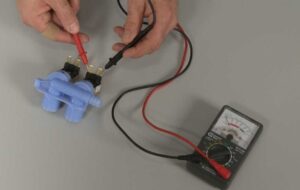 To check the solenoid valve of an automatic machine, you need to know what voltage is supplied to it. When working with the element, it is important to follow safety rules, then troubles will not happen. Let's try to understand its main characteristics.
To check the solenoid valve of an automatic machine, you need to know what voltage is supplied to it. When working with the element, it is important to follow safety rules, then troubles will not happen. Let's try to understand its main characteristics.
Main characteristics of the valve
Why understand what voltage is supplied to the valve of an automatic machine? This is necessary to assess possible risks and take all precautions. Only after receiving as much information as possible can you begin to diagnose.
Many users are surprised that the inlet valve begins to hum after the cycle starts. This is due to the principle of operation of the element. The spring is activated, the membrane opens and water begins to flow into the system. Considering the strong pressure in the pipes, such a sound is quite appropriate when the device is operating. The general characteristics of the intake solenoid valve are as follows:
- accepted voltage – 220 Volts;
- AC frequency – 50 Hz;
- thread size for connecting the inlet hose – 3/4;
- normal operating pressure – up to 1 megapascal;
- nominal throughput – 10 liters of water per minute. at a pressure in pipes of 0.3 megapascal;
- power – 8 Watt;
- nominal resistance – 3600 Ohm. ±5% deviation is allowed.
If the inlet valve of the washing machine breaks or becomes clogged, water stops flowing into the drum, therefore, the machine cannot start washing. In this situation, you will have to either change the element or completely disassemble and clean the part. Let's figure out what parts the structure consists of.
Intake valve design and materials
You can find the element under the top cover of the washing machine, in the area where the filler corrugation is connected. The inlet valve is small in size and consists of a body, a coil, a spring, a membrane and a core that blocks the water flow. The valve body is usually made of a temperature-resistant polymer. Less commonly you can find elements made of steel or brass. An electromagnetic coil is attached to the “cartridge”.
The coil contains magnets. The number of solenoids can vary from one to three. The number of coils will depend on how many sections the valve has. Different washing machines have single, double, triple or quadruple devices. The valve diaphragm is usually made of heat-resistant rubber. Less commonly, a rubber mixture or silicone is used for its manufacture. Everything is clear with the spring; it is made of metal.
Inlet valves may vary in the number of sections, coils, and materials of manufacture, but the principle of operation of the device remains unchanged.
How does this device work?
The operation of the washing machine coils is controlled by the main control module. In a static state, when voltage is not supplied to the valve, the membrane ensures the tightness of the device, preventing water from entering the machine. The design is so reliable that it can withstand high water pressure.
When the user starts the washing machine, the control board sends a signal to the coil. The rod, feeling the influence of electromagnetic pulses, is drawn into it, “dragging” the piston along with it. Thus, the device opens and water begins to flow into the tank.When the current supply is stopped, the membrane is again pressed against the “seat” of the housing, ensuring complete sealing of the system.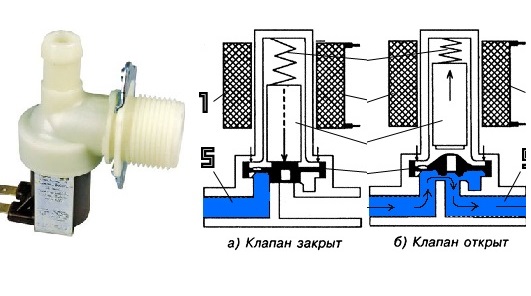
Washing machines manufactured 10-15 years ago mainly have single-coil valves. In this situation, the flow of water into different compartments of the powder receiver is regulated by a mechanical control device. In more modern models, double and triple devices are installed, where each of the coils is responsible for its “own” cuvette compartment.
Typically there are three sections in a powder receiver. When such a machine has a two-coil valve, water begins to “enter” the third section when both electromagnets are triggered at once. A pressure switch monitors how much water is in the tank. As soon as the washing machine is filled to the required level, the sensor notifies the electronic module. The “brain” stops supplying voltage to the valve coils. This process is repeated several times during the washing cycle.
What breaks the valve and how to replace it?
If the automatic washing machine refuses to draw water or fills too slowly, you will have to inspect the solenoid valve and check it with a multimeter. Before performing diagnostics, be sure to turn off the power to the washing machine and turn off the shut-off valve. After this, you can unhook the inlet hose from the rear wall of the housing.
The inlet valve mesh often becomes clogged; to clean it, it is not necessary to disassemble the device.
You will need pliers to remove the filter. Unhook the inlet hose from the machine and take a closer look - a metal mesh will be visible where it connects to the body. By grasping the protruding edges, you can remove the filter element. After cleaning it is put in place.
If the washing machine was parked in a cool room, the water remaining in the valve could freeze and the body of the device could crack. In this case, only complete replacement of the part will help. Sometimes the “end” comes to electromagnetic coils. If one of them burns out and stops “retracting” the rod, the operation of the valve will be disrupted. The intake element will have to be replaced. The algorithm of actions is as follows:
- de-energize the SMA;
- turn off the water supply and unhook the inlet hose from the body;
- remove the top panel of the case (or the side panel, for “vertical”);
- disconnect the wiring and pipes connecting it to the dispenser from the valve;
- Unscrew the bolts that secure the device to the housing;
- remove the old valve and install a working one in its place.
To avoid any questions, before disconnecting the wires, it is advisable to take a photograph of their connection diagram. This will help you avoid mistakes when reassembling. The replacement procedure is quite simple; even a “newbie” can handle the job.
Interesting:
Reader comments
- Share your opinion - leave a comment


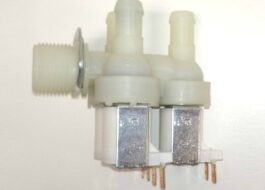
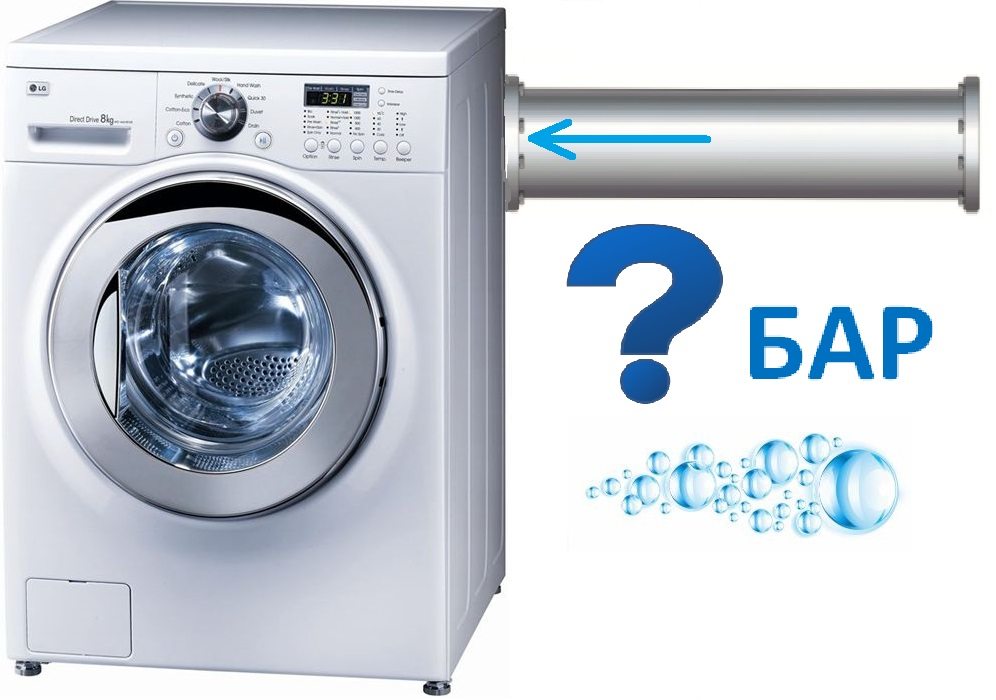
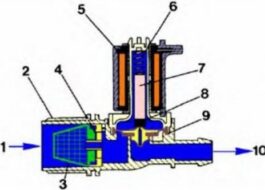
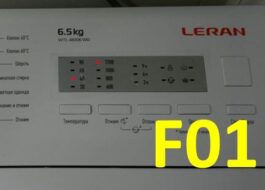















Add a comment